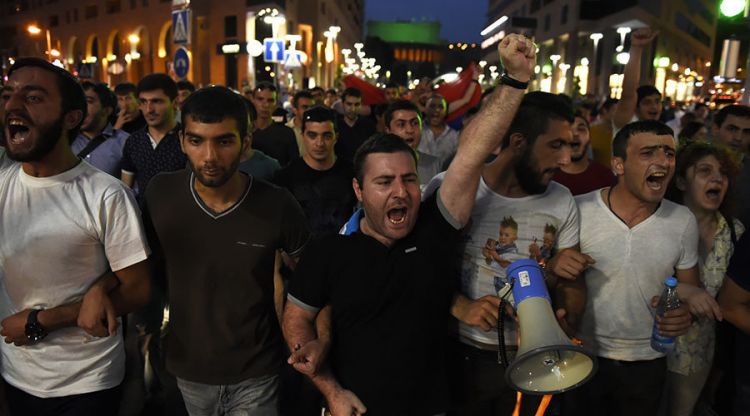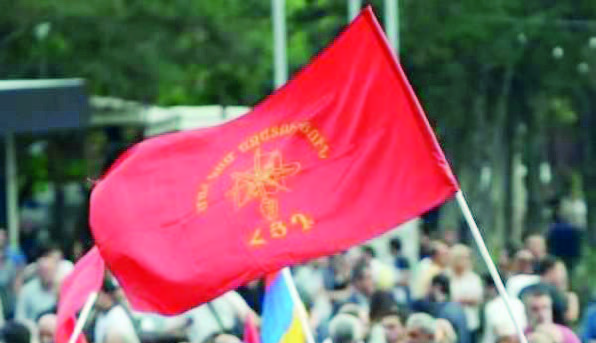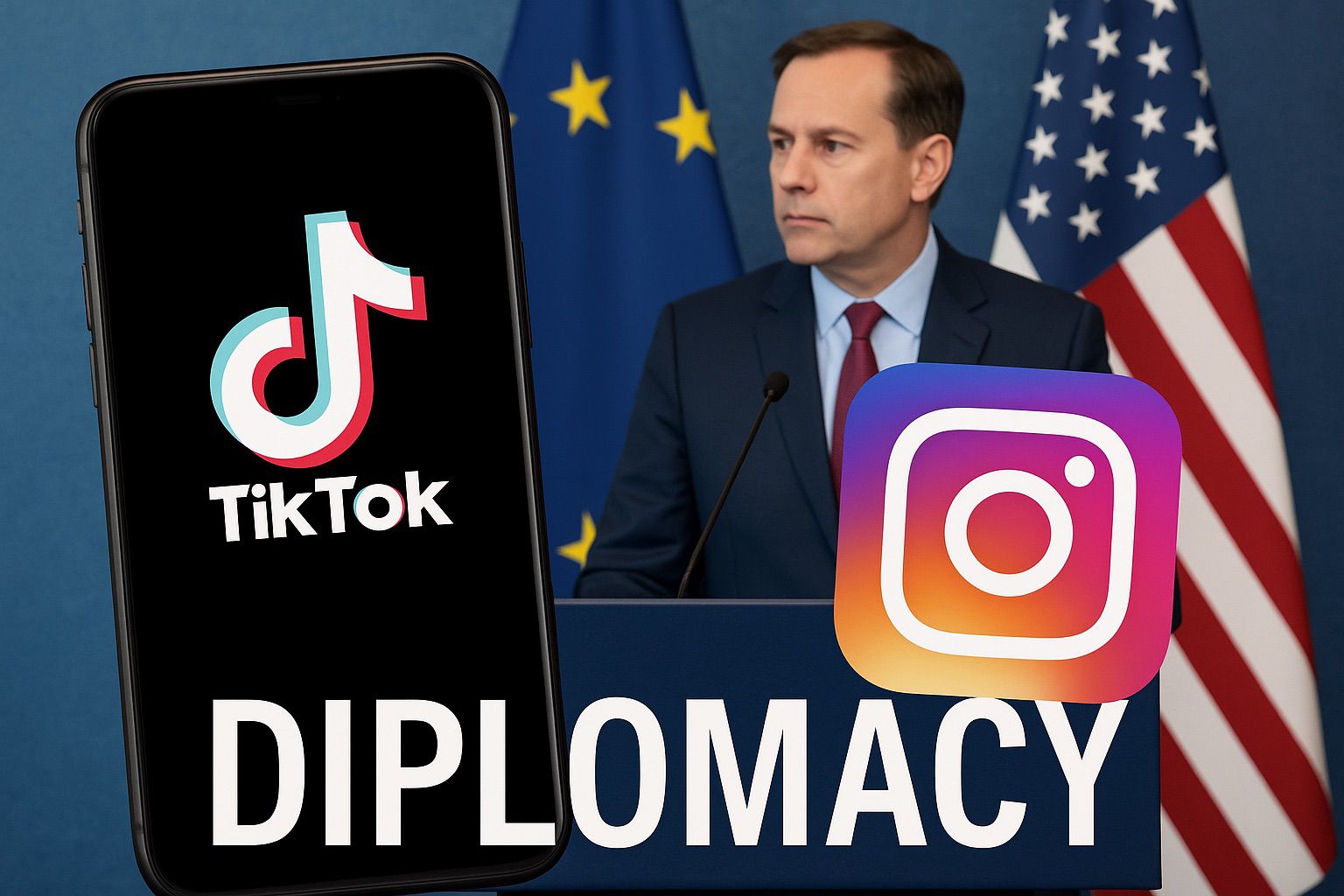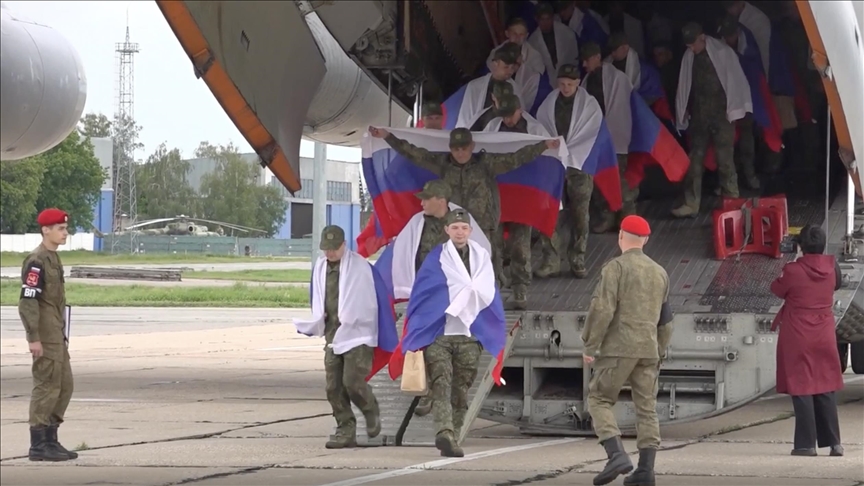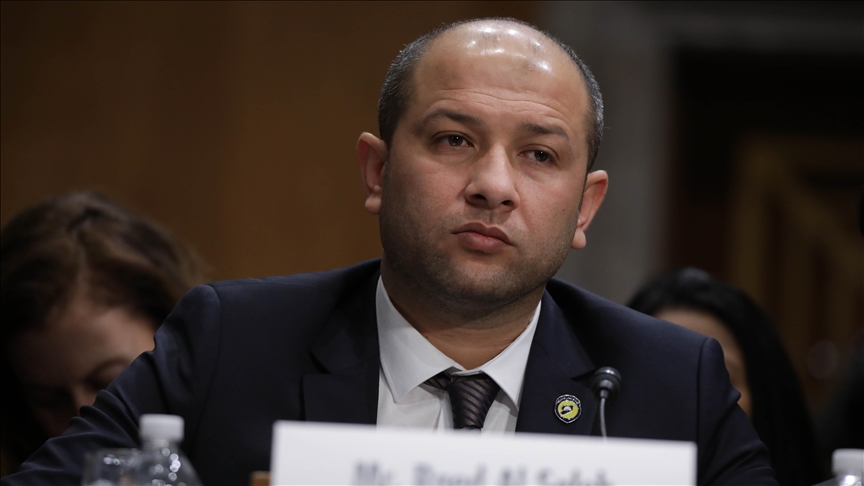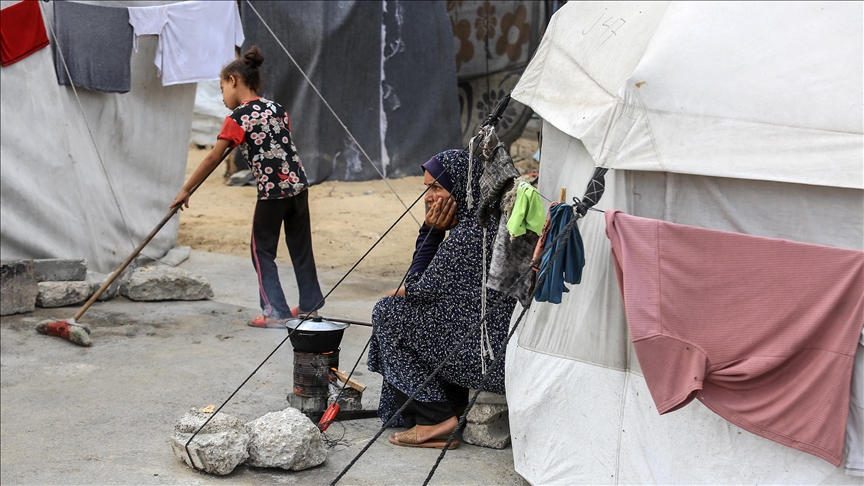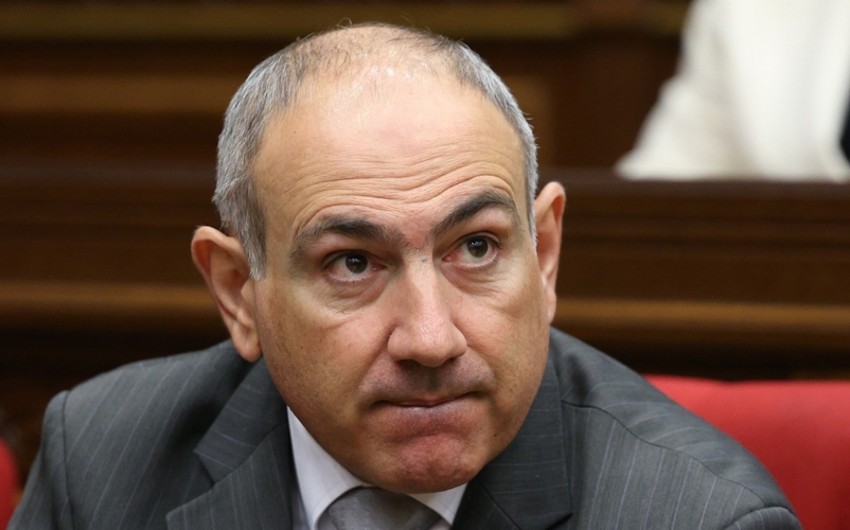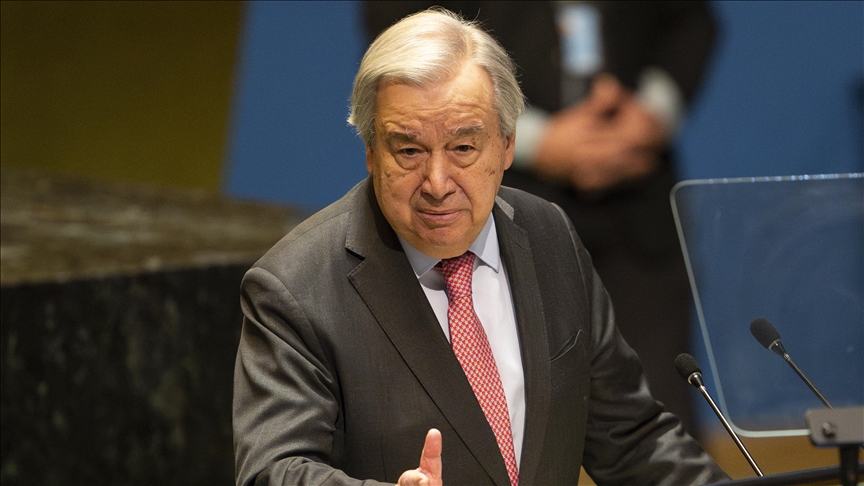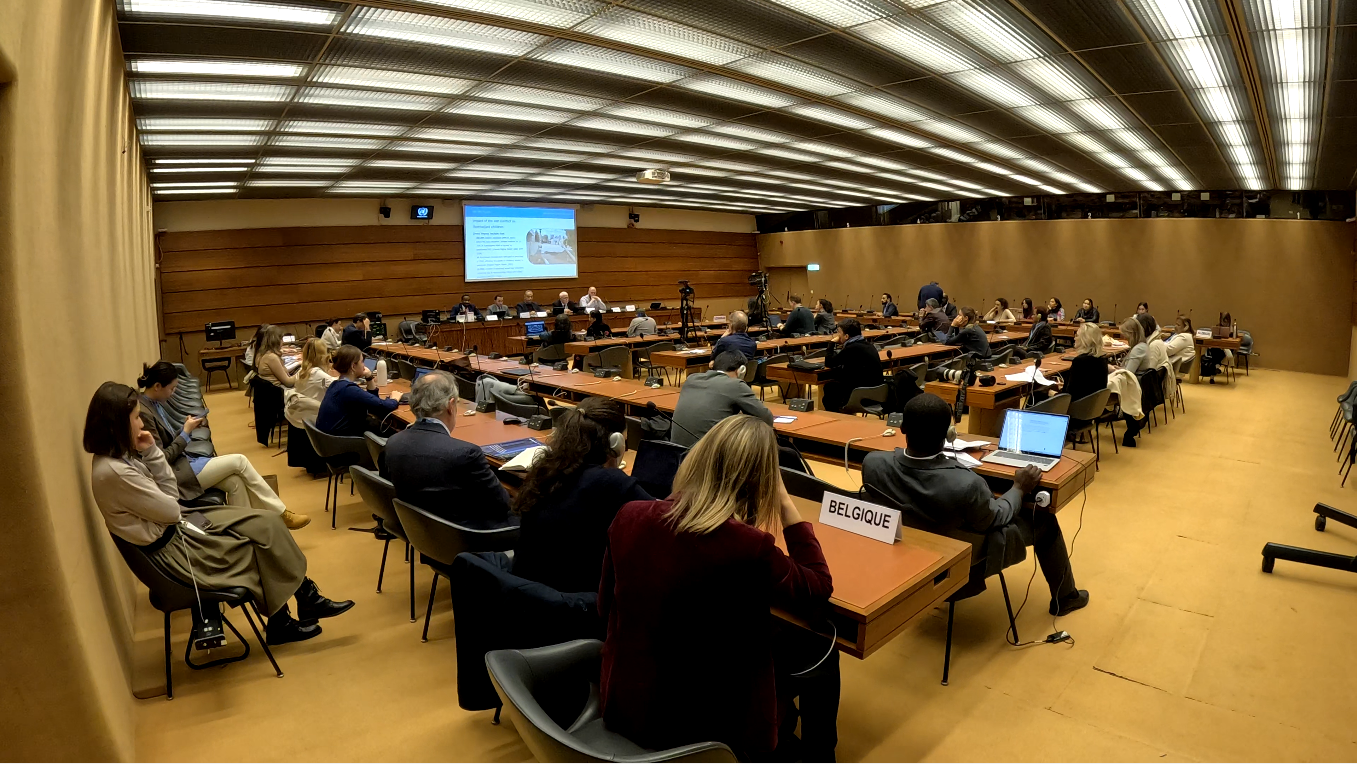The 4-day protest in Yerevan has caught the regional attention. This is certainly not the first protest in Yerevan; but its scale is unprecedented for its 4-day length and violent clashes. Considering the lingering doubts about the roots and consequences of the coup attack in Turkey last week, many question why protest suddenly took place now in Yerevan with such level of aggression. In this article, we would like to summarize some interesting facts of this crisis so as to offer insight into the situation.
Overview of the protest
The crisis first started on 17th July when members of the so-called Founding Parliament, a non-system opposition organization, declared to have detained a police station in Erebuni community – which is a symbol of justice and legitimacy of Armenia. The motive of the opposition activists was to pressure the government to release their leader, Jirair Sefilyan, who was officially imprisoned under suspicion of illegal arms trafficking. Shootings and explosions were employed. The opposition group captured several people as hostages inside the seized police station, demanding president Sargsian to resign and Jirair to be released.
It is noticeable that Armenia’s deputy police chief General Major Vardan Egiazaryan and Yerevan deputy police Chief Colonel Valeri Osipyan were also included among the hostages. In an effort to rescue the hostages, one police officer was killed and 2 others got wounded.
Later on, Armenian President Serzh Sargsyan had to hold meeting with top national security officials to discuss concrete measures to solve the crisis. All streets leading to the seized police station were closed to prevent more protesters approaching the site. Nevertheless the situation remained tense with the rising number of participants in the demonstration process day by day.
Tension continued to rise as 200 people gathered at the Freedom Square in Yerevan to support the armed opposition group, who had seized the police station on July 17th. These activists claimed their actions to be of peaceful nature, and that the previous capture of the police station and hostages should also be regarded as a peaceful process.
The crisis continued to intensify until 20th of July, resulting in around 45 people being hospitalized. Currently, the situation has more or less calmed down thanks to a line of civilians standing between the police and protesters to prevent more violence. Still, protesters persistently insisted their 2 demands to be met.
Who is Jirair Seiflian?
Jirair Seiflian, for whose release the protesters have been demonstrating, is the leader of Armenian opposition group named the New Armenia Public Salvation Front. Jirair Seiflian is a native Lebanon, who arrived in Armenia to take part in the Karabakh war in the early 1990’s. He has rich fighting experience, not only in Lebanon war, but also in Karabakh as one of the most famous military leaders. Seiflian enjoyed great support from the Armenian diaspora and war veterans in Karabakh.
Sefilian created the Founding Parliament - the radical opposition organization, which has been protesting for his release since July 17th 2016, in 2015 and joined the board of the opposition campaign "New Armenia.”
He harshly criticized Yerevan's position on the Karabakh issue. Seiflian called for the resumption of hostilities against Azerbaijan after the April 2016 war. On June 20th, 2016, he was arrested on suspicion of smuggling and possessing weapons, which his supporters instead deemed as a frame-up to persecute their leader for his political views, activities and statements about the territorial losses the Armenian side suffered during the April war.
The New Armenia Movement was the interesting connection between Seiflian and Raffi Hovannisian, who was the founder of the Movement. Raffi Hovannisian was born in the US and spent the first 31 years of his life there. After the collapse of the USSR, Raffi became the first Minister of Foreign Affairs in Armenia. He used to be the runner-up in the presidential election in 2013, receiving more than 36% of the vote, but later opposed to the government through the New Armenia movement, which actively exploited the Karabakh problem to accuse authorities of surrendering national positions to Russia.
Current situation
Armenian intellectuals tried to address and urge Jirair Sefilian into persuading his friends to lay down their arms and surrender to law enforcement agencies.
Some of the officials said that the this ongoing armed opposition was a serious threat to the stable state of Armenia.
Varuzhan Avetisyan , spokesman of the Founding Parliament Organization, said that this demonstration aimed to urge for change of power in Armenia.
Question?
Many equal this armed opposition process with a military coup. The question is whether this Armenian military coup has any connection with the military coup in Turkey last Friday and the Turkey-Russia rapprochement.
Reaction from international community
The US State Department has condemned "the use of violence to effect political change in Armenia" and urged the government to "handle the situation with appropriate restraint."
International media considered “Armenia protest turns violent”.
Implications of the violent crisis?
The first implication of this crisis is the fragile state of Armenian government. The War in April between Azerbaijan and Armenia turned out to be a great shock for Armenian citizens, shaking the citizens’ belief in government. Undoubtedly, this instability can threaten Armenia as a united state. Just like in Turkey, military coup or violent demonstration is not solution to improve the situation in the country. This will only create a window opportunity for the external forces to intervene, destroy the country from inside for their own interests.
It is hard to specifically accuse anyone or any identity for what has been happening in Yerevan. There could be several interpretations for this crisis based on the simple rule of identifying the benefiters of the situation.
One interpretation is that president Sarsgyan is creating a show to warn Russia of his importance in ensuring Russian interests in the region. Posing Seiflian, an anti-Russian nationalist, as the target of the demand for protesters, Sargsyan might have implied that should Russian government stop to support and fulfill his demands, the next leader will be a serious threat.
The second interpretation is that the crisis is influenced by some external forces, which disliked watching Russia-Turkey rapprochement. As Turkish government has shown willingness to cooperate with Moscow, they can build up an alliance that is unfavorable to others having interests in the region. It cannot be a coincidence that a military coup took place in Armenia right after the military coup in Turkey. Violence in Yerevan, if successfully implemented, can possibly lead to rising tension between Azerbaijan and Armenia over Nargono-Karabakh, exactly based on which the opposition side is gaining support from the citizens. And once problem flares up again between Azerbaijan and Armenia, Turkey-Russia rapprochement would require more time and efforts to achieve.
These interpretations are not baseless. Those acquainted with Armenian history would immediately draw comparison between the recent clash and the shooting in 1998, October 27th. Right at the critical moment when the Karabakh issue achieved some positive results and was approaching resolution, a terrorist attack took place at the Armenian National Assembly in Yerevan, resulting in the deaths of 8 official leaders, including the Prime Minister Vazgan Sargsyan and Parliament Speaker Karen Demirchyan. This incident remains one of the most controversial events in post-Soviet Armenian history. Experts with conspiracy theory background suspected President Robert Kocharyan, whose presidency was often criticized as authoritarian, of being the real “designer” of the violent attack. Recalling the significant changes in the country’s political landscape, one can rightfully worry about another political “earthquake” in Armenia as the result of the 4-day violence, which also originated from discontent in Karabakh process.
The views expressed in this article exclusively belong to Editors Fazilat Samadova and Linh Tong and do not reflect the official standpoint or position of Eurasia Diary.

